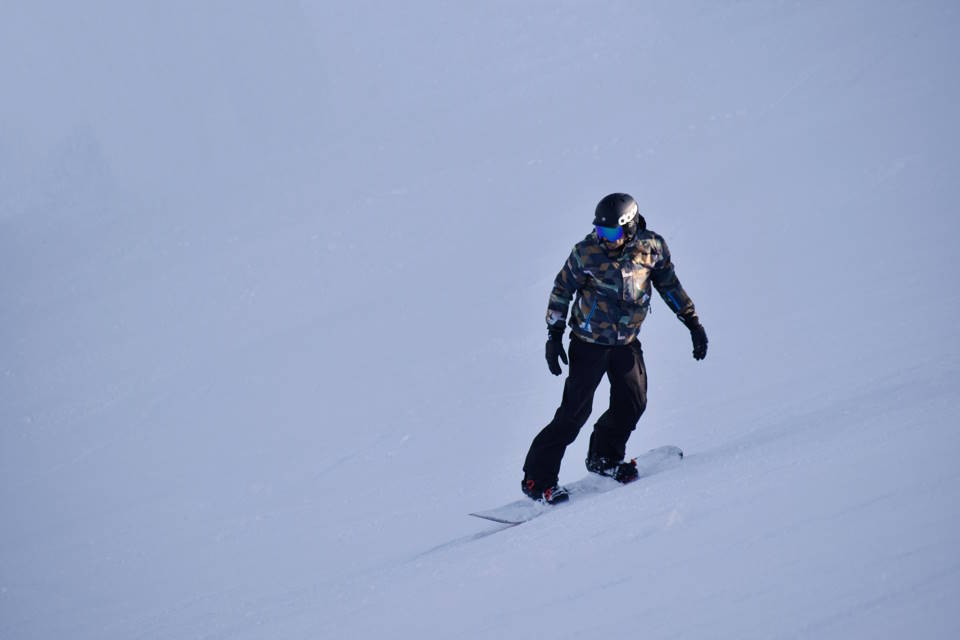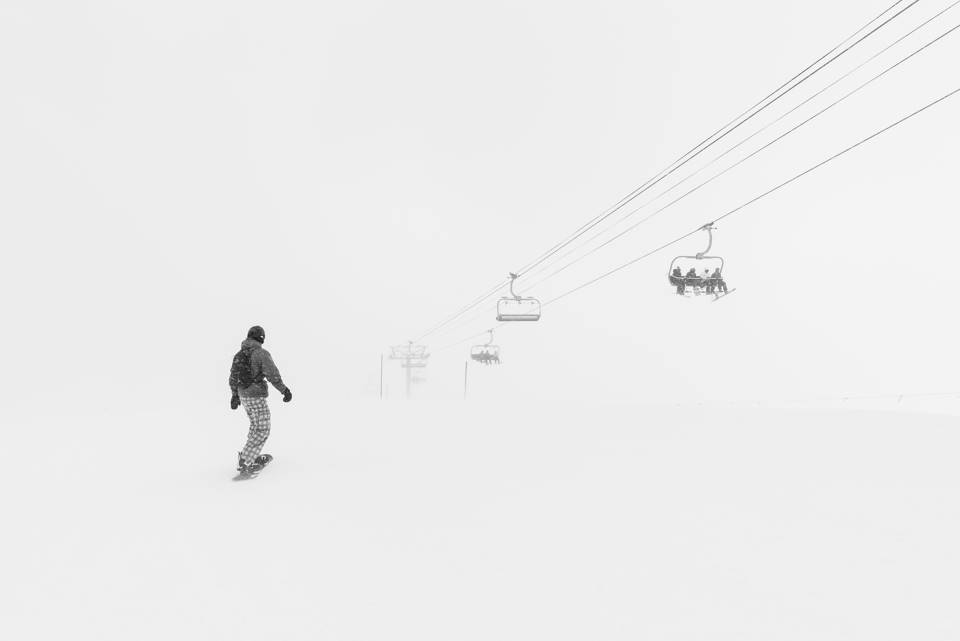Are you struggling to keep your snowboard edges sharp and ready to carve through the snow? In this blog post, we will explore everything you need to know about maintaining the sharpness of your snowboard edges. From choosing the right edge sharpening tools to understanding the proper techniques for edge sharpening, we’ve got you covered. We’ll also delve into ways to test the sharpness of your snowboard edges, as well as effective methods for maintaining that sharpness for longer. Get ready to hit the slopes with confidence and precision!
Choosing The Right Edge Sharpening Tools
When it comes to keeping your snowboard edges sharp, having the right tools is essential. But with so many options available, how do you know which ones to choose? It can be overwhelming, but fear not! In this blog post, we’ll walk you through the process of selecting the perfect edge sharpening tools for your snowboard.
First and foremost, you’ll want to consider the type of edge sharpening tool you prefer. There are two main options: handheld files and edge sharpening guides. Handheld files offer the advantage of more flexibility and control, allowing you to customize the shape and bevel of your edges. On the other hand, edge sharpening guides are more user-friendly, providing a consistent angle every time.
- If you’re an experienced snowboarder who loves tinkering with your gear, a handheld file might be the way to go. Look for one that has multiple grit options, as different edge conditions may require different levels of coarseness. This will allow you to fine-tune your edges to perfection.
- However, if you’re a beginner or simply prefer a simpler approach, an edge sharpening guide is the way to go. These guides come in various designs, but they all serve the same purpose – to hold your file securely at the correct angle. Some even have built-in angle indicators to ensure precision.
Another important factor to consider is the quality of the sharpening tool. Cheap or poorly made tools can not only give subpar results but may also damage your edges. Look for tools made from high-quality materials such as diamond or ceramic, as they tend to be more durable and provide better sharpening performance.
Furthermore, don’t forget about the ergonomics of the tool. Since sharpening your edges can be a time-consuming process, it’s important to choose a tool that feels comfortable in your hand. Some tools come with ergonomic handles or rubberized grips, which can greatly reduce hand fatigue and make the task more enjoyable.
| Pros of Handheld Files: | Pros of Edge Sharpening Guides: |
|---|---|
| Versatility: Handheld files allow you to customize the shape and bevel of your edges. | Consistency: Edge sharpening guides provide a consistent angle every time. |
| Multiple Grit Options: You can choose different levels of coarseness depending on your edge condition. | User-Friendly: These guides are perfect for beginners or those who prefer a simpler approach. |
| Customization: Handheld files allow you to fine-tune your edges to perfection. | Precision: Some edge sharpening guides have built-in angle indicators for precise sharpening. |
Understanding The Proper Technique For Edge Sharpening
Have you ever wondered how professional snowboarders always seem to effortlessly glide down the slopes with perfect control? One key factor is having sharp edges on their snowboards. Sharpening your snowboard edges is essential for maintaining control and stability while riding. However, simply owning the right edge sharpening tools is not enough – you also need to understand the proper technique for sharpening your snowboard edges.
First and foremost, it’s crucial to select the right edge sharpening tools that suit your specific needs. There are various options available, such as handheld files, edge tuning tools, and diamond stones. Each tool has its own advantages and disadvantages, so it’s important to do your research and choose the one that best fits your preferences and experience level.
Once you have the appropriate tools in hand, it’s time to dive into the technique of edge sharpening. Start by securely clamping your snowboard into a workbench or a vise, ensuring that it remains stable throughout the process. Make sure to wear protective gloves to avoid any accidental injuries.
Now, let’s break down the steps involved in edge sharpening. Begin by using a file or diamond stone to remove any rust or burrs from the edge. This step is crucial as it helps to create a clean and smooth surface for sharpening. Next, identify the edge angle you want to achieve – typically, a 90-degree angle is recommended for beginners. Use a file or tuning tool to carefully sharpen the edge, moving from tip to tail in smooth and consistent motions.
After sharpening, it’s time to assess the sharpness of your snowboard edges. One effective method is the “thumb test.” Gently run your thumb along the edge to feel for any burrs or rough spots. If it glides smoothly and your thumb remains unharmed, congratulations – you’ve successfully sharpened your snowboard edges!
Remember, regular maintenance is key to keeping your snowboard edges sharp and ensuring optimal performance on the slopes. Make it a habit to check and sharpen your edges before every ride, especially if you encounter icy or challenging conditions. With proper technique and consistent maintenance, you’ll be carving the slopes like a pro in no time!
Testing The Sharpness Of Your Snowboard Edges
Snowboarding is an exhilarating sport that requires skill, finesse, and proper equipment. One crucial aspect of your snowboarding gear is the sharpness of your snowboard edges. The edges of your snowboard are responsible for giving you control over your ride, especially when turning and carving down the slopes.
Now, you might be wondering how you can determine the sharpness of your snowboard edges. Well, worry no more! In this blog post, we will guide you through some methods to test the sharpness of your snowboard edges.
Method 1: The Fingernail Test
- Start by gently running your fingernail along the edge of your snowboard.
- If your nail catches or feels rough, it indicates that your edges are sharp. Sharp edges should easily grip your nail.
- Continue checking the sharpness of the edges on both the base and side of your snowboard.
| Base Edge | Side Edge |
|---|---|
| Your snowboard’s base edge should be smooth and sharp, allowing you to glide over the snow effortlessly. | The side edge, which is the vertical edge of your snowboard, should also be sharp to provide effective turning and carving. |
Method 2: The Paper Test
- Place a sheet of paper between your snowboard and a table or any flat surface.
- Hold the edge of your snowboard against the paper at a slight angle.
- Try to pull the paper out by sliding it against the edge of your snowboard.
- If the paper easily slides out without resistance, it indicates that your edges are not sharp enough.
- However, if the paper tears or gets stuck, it means that your edges are sharp and will provide good grip on the snow.
Method 3: The Visual Inspection
- Inspect your snowboard edges visually.
- Look for any visible signs of dullness, burrs, or nicks on both the base and side edges.
- If you find any imperfections, it’s time to sharpen your edges using appropriate tools.
- Remember, sharp edges are essential for maintaining control and preventing unexpected slips or accidents on the slopes.
By following these testing methods, you can ensure that your snowboard edges are sharp and ready for the upcoming adventures on the snow-covered mountains. Remember, regular edge maintenance and sharpening will prolong the lifespan of your snowboard and enhance your overall snowboarding experience. Happy shredding!
Maintaining The Sharpness Of Your Snowboard Edges
Snowboarding is an exhilarating sport that requires skill, precision, and the right equipment. One important aspect of snowboarding is maintaining the sharpness of your snowboard edges. Sharp edges are essential for carving turns, maintaining control, and navigating icy conditions. In this blog post, we will delve into the importance of edge maintenance and share some tips on how to keep your snowboard edges sharp.
First and foremost, it’s crucial to understand why maintaining the sharpness of your snowboard edges is important. Imagine trying to navigate down a steep slope with dull edges – it would be like trying to cut through a thick slab of ice with a butter knife! Sharp edges provide grip and stability, allowing you to make precise turns and maneuvers on the slopes. They also help in icy conditions, where having good edge control can be a game-changer.
So, how do you maintain the sharpness of your snowboard edges? One effective method is regular tuning. Tuning involves several steps, including sharpening the edges, removing any burrs or nicks, and waxing the base of your snowboard. The first step is to choose the right edge sharpening tools. Investing in a good quality edge tuner or file is essential. Make sure to choose a file with the appropriate grit for your snowboard’s edges. Grit refers to the coarseness of the file, and it can vary depending on the condition of your edges.
- Start by securing your snowboard in a stable position, either using a vise or propping it against a wall to prevent any movement during the tuning process.
- Using the edge tuner or file, gently run it along the edges of your snowboard at a consistent angle. It’s best to refer to your snowboard’s manufacturer guidelines for the recommended angle, as it can vary depending on the type of board.
- Be sure to use long, fluid strokes and apply even pressure to achieve a uniform sharpening. Take your time and pay attention to every section of the edges.
| Benefits of Maintaining Sharp Edges | Drawbacks of Dull Edges |
|---|---|
| 1. Increased Grip: Sharp edges provide better grip and control on the slopes, allowing for smoother turns and improved performance. | 1. Reduced Control: Dull edges can result in reduced control, making it harder to maintain balance and navigate tricky terrain. |
| 2. Enhanced Maneuverability: Sharp edges allow for more precise maneuvers and quick edge-to-edge transitions, enhancing your overall snowboarding experience. | 2. Poor Carving Ability: Dull edges can hinder your carving abilities, making it harder to create clean, efficient turns. |
| 3. Better Edge Hold: Sharp edges provide better edge hold, especially in icy or hard-packed snow conditions, ensuring you stay in control. | 3. Increased Risk of Slips: Dull edges can increase the risk of slips and falls, particularly on icy slopes where optimal edge control is essential. |
After sharpening, it’s important to check the sharpness of your edges. One way to test the sharpness is by carefully running your finger diagonally across the edges. If you feel a consistent and smooth bite, your edges are sharp. However, if you encounter any snags or rough patches, it might be necessary to re-sharpen those areas. Remember, maintaining the sharpness of your snowboard edges is an ongoing process, and regular inspections are key to ensuring optimal performance on the slopes.
In conclusion, keeping the edges of your snowboard sharp is essential for maintaining control, improving performance, and enhancing your overall snowboarding experience. By investing in the right edge sharpening tools and following the proper technique, you can ensure that your snowboard edges remain sharp and reliable throughout the season. So, don’t forget to give your snowboard the attention it deserves and enjoy carving up the slopes with confidence!








